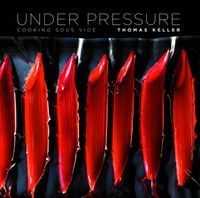Advertisement
A Brief History
Appears in
Published 2008
Sous vide cooking has long been part of commercial food production for its economy, safety, and efficiency, but only recently has it reached the kitchens of fine-dining restaurants, where its most exciting applications are being explored every day.
The modern era of sous vide began in the early 1970s, when a French biochemist and microbiologist in love with food, Bruno Goussault, realized that you could make an inexpensive, tough cut of beef tender by cooking it at a very low temperature.
Vacuum-packing food had already been around for several decades, a process first credited to the Hills Bros. coffee company early in the twentieth century. In the 1940s, a company called Cryovac used plastic to shrink-wrap turkey for freezing. (The increased shelf life helped turn what had been a seasonal food into a year-round supermarket and deli meat staple.) In the 1960s, hams and sausages were being vacuum-packed for preservation in Europe, and a little later they were also cooked in that hermetic environment, in effect being pasteurized. In other words, when these items were cooked in plastic, the bacteria that caused their spoilage were eliminated, and thus our food sources became much safer.

